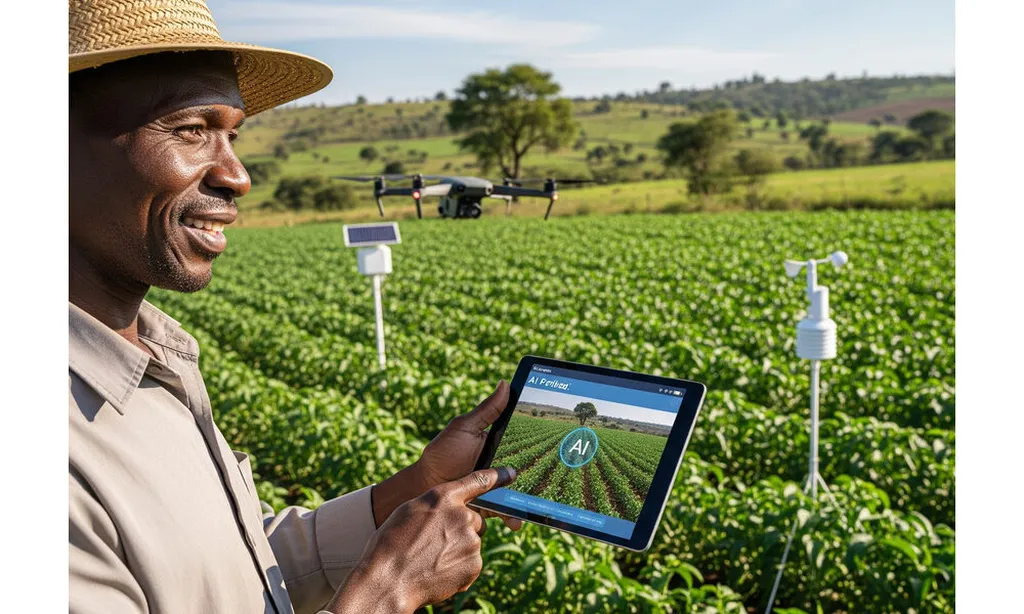In the vast, sun-drenched fields of Africa, a quiet revolution is brewing, one that promises to reshape the continent’s agricultural landscape. At the heart of this transformation is artificial intelligence (AI), a technology that is steadily making inroads into African agriculture, according to a recent scoping review published in *Advances in Agriculture*. The review, led by Toritseju Begho from Rural Economy, explores the current applications, opportunities, and challenges of AI in African agriculture, offering a glimpse into the future of farming on the continent.
AI is already making waves in African agriculture, from optimizing resource use on farms to streamlining supply chains. “AI-driven innovations have numerous potentials and are already transforming African agriculture by improving efficiency,” Begho notes. For instance, AI-powered tools can analyze soil health, predict weather patterns, and even diagnose plant diseases, enabling farmers to make data-driven decisions that boost productivity and profitability.
However, the journey towards widespread AI adoption in African agriculture is not without its hurdles. Infrastructural deficits, high costs, digital literacy gaps, and socio-economic inequalities, including gender disparities, are significant barriers. “Without strategic investment in infrastructure, education, and policy reforms that prioritize inclusivity and equity, AI risks becoming an inaccessible innovation and a technological mirage for many African farmers,” Begho warns.
Data ownership and privacy concerns also loom large, raising important ethical considerations. Establishing robust regulatory frameworks to address these issues is crucial to increasing trust and acceptance of AI among farmers and other stakeholders.
The commercial impacts of AI on African agriculture could be profound. By enhancing efficiency and productivity, AI can boost farmers’ incomes and contribute to the continent’s economic growth. Moreover, AI-driven technologies can help African agriculture become more sustainable, a critical factor given the increasing global demand for ethically and environmentally friendly products.
The success of AI in African agriculture will hinge on how well it is integrated into local agricultural systems and its ability to address the continent’s unique challenges. This means investing in digital literacy programs, developing farmer-friendly AI-driven technologies tailored to local contexts, and fostering collaboration between governments, private sectors, research institutions, and farmers.
As Begho and her colleagues highlight in their review, AI holds immense promise for African agriculture. But realizing this promise will require concerted efforts from all stakeholders. The future of African agriculture is not just about embracing new technologies; it’s about ensuring these technologies are accessible, equitable, and truly transformative. With strategic investments and inclusive policies, AI could indeed be the catalyst that propels African agriculture into a new era of prosperity and sustainability.

